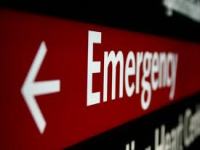Hypertensive Emergency Explained
 Hypertensive emergency is characterized by severe blood pressure elevation with a blood pressure range greater than 180/120mmHg coupled by manifestation of evidence of impending or progressive target organ dysfunction. Doctors overall appreciate that coming up with a definition for the condition is difficult because there are age related issues. It is for this reason that there are certain characteristics and manifestations that are checked for to conclude an emergency associated with hypertension. For example a child with a systolic blood pressure reading of 150mmHg may suffer an emergency yet an adult with a systolic reading of 250mmHg may not suffer an emergency. Consequently doctors seriously consider organ damage when thinking about an emergency for hypertension.
Hypertensive emergency is characterized by severe blood pressure elevation with a blood pressure range greater than 180/120mmHg coupled by manifestation of evidence of impending or progressive target organ dysfunction. Doctors overall appreciate that coming up with a definition for the condition is difficult because there are age related issues. It is for this reason that there are certain characteristics and manifestations that are checked for to conclude an emergency associated with hypertension. For example a child with a systolic blood pressure reading of 150mmHg may suffer an emergency yet an adult with a systolic reading of 250mmHg may not suffer an emergency. Consequently doctors seriously consider organ damage when thinking about an emergency for hypertension.
In particular an individual in a hypertension emergency will have impairment of an organ system particularly the central nervous system, cardiovascular system and the renal system. Damage that may occur to the brain, heart, kidneys and eyes can be permanent. In particular a patient might lose their sight if the damage to the eyes is so severe. This means a hypertensive emergency as the name suggest requires immediate treatment. Due to growing home blood pressure monitoring and the spread and availability of personal blood pressure monitors the incidence of emergencies when it comes to hypertension has drastically reduced. In fact as little as one percent of hypertensive adults in the United States out of a possible 50 million actually suffer emergencies. This is an upward number of 500 000 people per year. Ongoing blood pressure monitoring at home and at the doctor's office ensures that early hypertension treatment is carried out leading to controlled high blood pressure
When an emergency does to come with organ damage doctors consider it a hypertensive urgency which is something entirely different from an emergency. Consequently a hypertensive urgency is treated differently from a hypertensive emergency. This is an important initial step in as far as diagnosis of an emergency is concerned. It is in fact a crucial step in the management of these two conditions at any given time or case. In making diagnosis of an emergency, doctors are interested in physical examination of the patient as well as general hypertension history of the patient in question. In particular hypertensive emergency diagnosis involving a patient's history will consider when the patient was first diagnoses with high blood pressure.
In terms of treatment guidelines in an emergency doctors ensure that they do not sharply lower the severely elevated blood pressure. This can have detrimental medical effects. Blood pressure goals in this case will typically involve to initially lower the blood pressure smoothly to about 25 percent of the current level over a period of the first one to two hours. Further treatment is given to lower blood pressure to a level of about 160/100mmHg in the following two to six hours.
Hypertension specialists and experts fear that sharp and rapid reduction of so severe blood pressure readings may lead to coronary, cerebral or renal ischema which is essentially a restriction of blood supply to these important organs. This again can lead to brain damage as restricted blood flow to the brain also entails less oxygen reaching your brain.
The symptoms associated with an emergency will include the blood pressure reading itself of greater than 180/120mmHg, chest pain, severe headache, shortness of breadth poor balance and coordination, severe weakness, blurry vision and loss of vision. Doctors prefer to manage this condition in each individual on a tailor made basis.
Causes of Hypertensive Emergencies
 The following is a list of what doctors know to be some of the causes of emergencies;
The following is a list of what doctors know to be some of the causes of emergencies;
- Renal disease - involves faliure of kidneys to adequately filter toxins and waste products from the blood including adequate water excretion.
- Parenchymal disease - lung disease
- Renovascular disease - narrowing or blockage of ateries taking blood to the kidneys
- Abrupt withdrawal of certain high blood pressure meds
- Pregnancy - eclampsia or severe pre-eclampsia associated with gestational hypertension
- Central nervous system disorders
Return To Hypertension Guidelines from Hypertensive Emergency
Return To Hypertension Home from Hypertensive Emergency
(c) All Rights Reserved. 2010-2015





